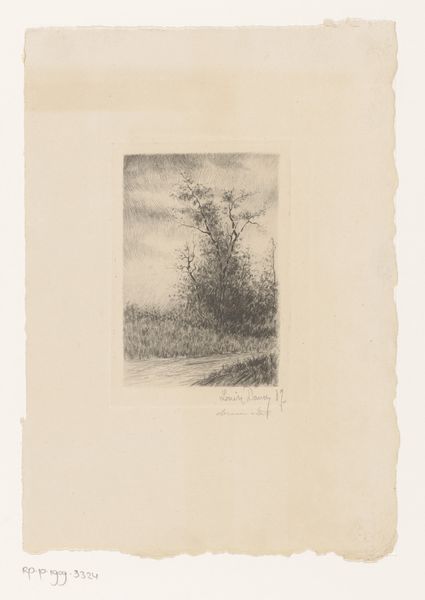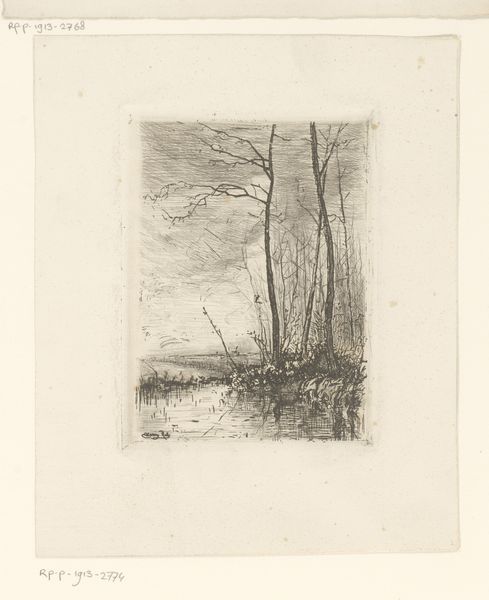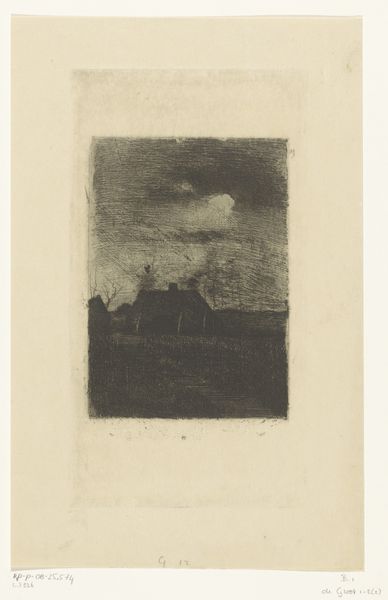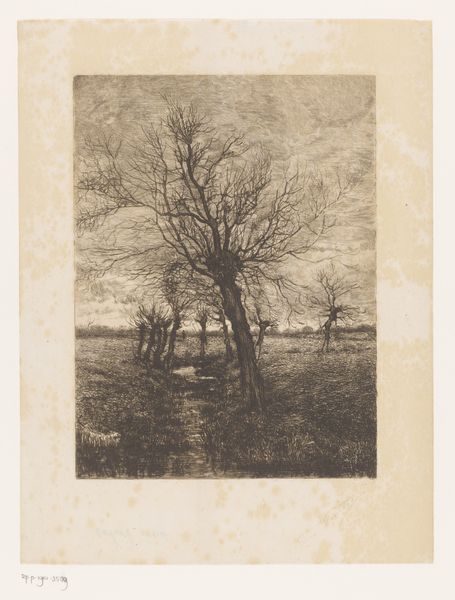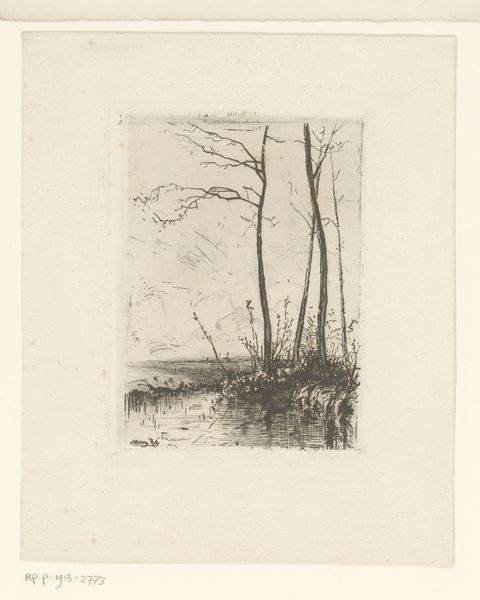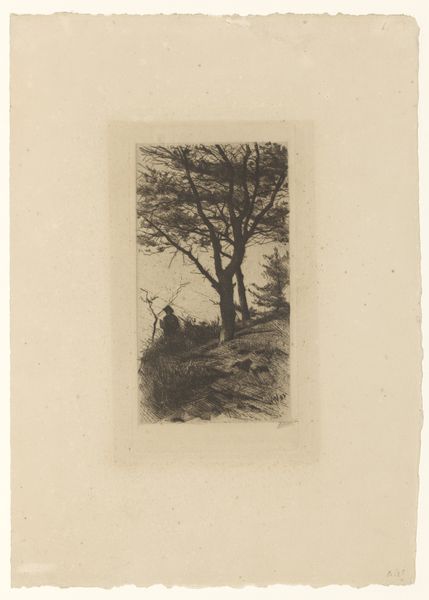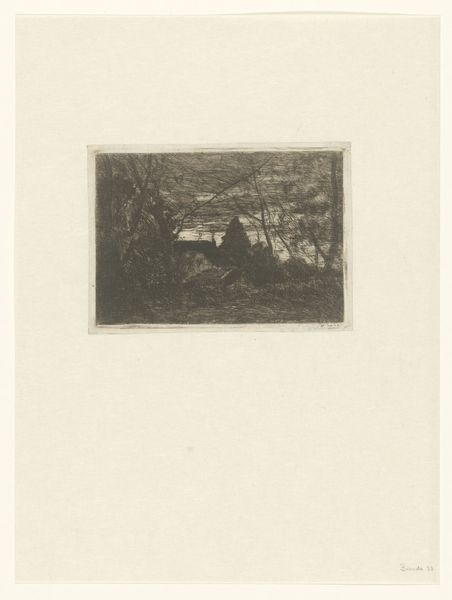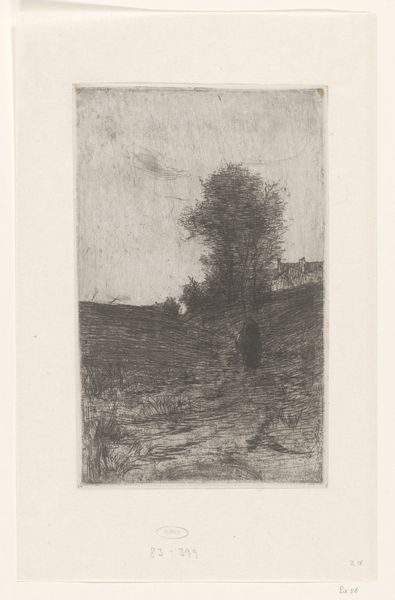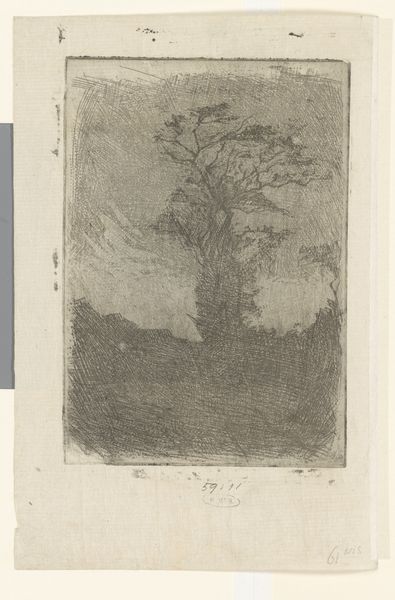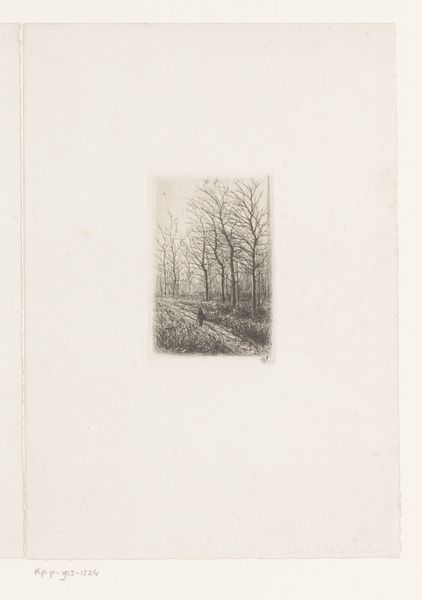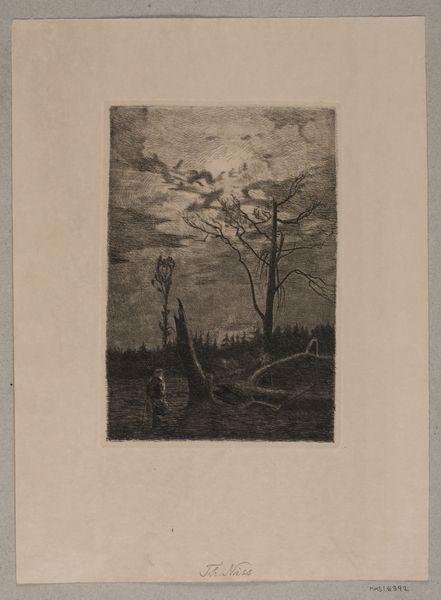
drawing, print, etching
#
drawing
# print
#
etching
#
landscape
Dimensions: height 119 mm, width 79 mm
Copyright: Rijks Museum: Open Domain
Editor: So, this is *Landschap met boom en toren* by Jan Veth, made in 1888. It’s an etching, a print on paper. There's this really solitary tree, stark against what seems like a cloudy sky. It has a very bleak, almost melancholic mood. What do you see in this piece? Curator: The desolation you’re picking up on speaks volumes. Landscapes weren't just pretty pictures. Think about 1888 – industrialization was rapidly changing the world. Doesn't the lone tree, dwarfed by the implied vastness of the landscape, feel like a symbol of the individual against overwhelming forces? Look at the small tower. Is it a church? Or a factory chimney? How does the tree in the landscape intersect with gender roles or notions of national identity in late 19th-century Dutch society? Editor: I hadn't thought of it that way. The tower almost disappears into the background. I was so focused on the tree. You are suggesting that there's a real tension between nature and this burgeoning industrial world… and it’s represented here by this muted conflict between organic and architectural presence? Curator: Precisely. And who is empowered to create or enjoy this art? Who is excluded? The choices regarding representation reflect prevailing societal biases of the time. If we explore beyond a purely formal analysis and start to consider broader cultural frameworks we can really unravel the meaning in this work. Editor: That makes a lot of sense. Thinking about the social and political context gives it so much more depth than just seeing it as a pretty landscape. Curator: Exactly. Considering the lens of the present and past broadens our understanding of these beautiful works.
Comments
No comments
Be the first to comment and join the conversation on the ultimate creative platform.

